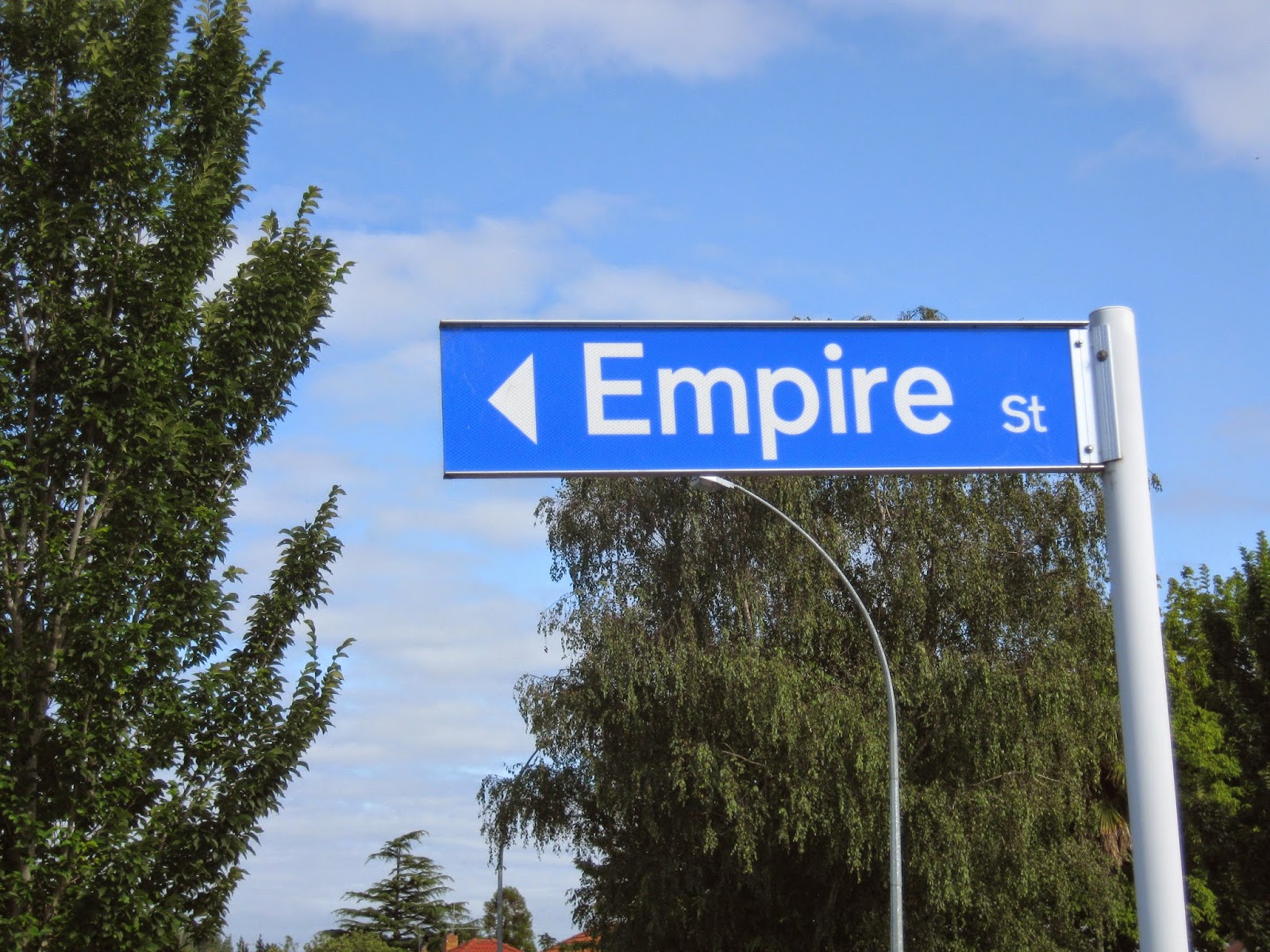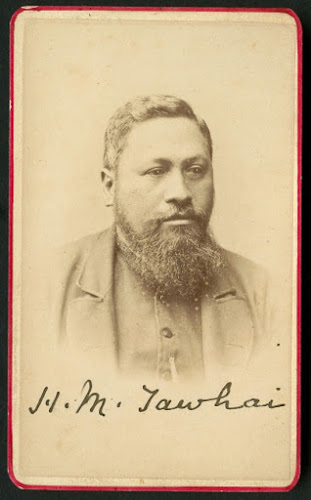Touring the Waikato War - A Photo Essay (Part One)
Over Waitangi weekend I spent four days touring sites associated with the Waikato War as part of research for my future book on the conflict. As I had only previously visited a handful of these sites before, the journey was important in helping me to develop a better understanding of the war. There is nothing quite like seeing with your own eyes. And some stops were completely unscheduled, like this street sign in Hamilton.
Preparation is important for a trip like this: many of the key Waikato War sites are poorly signposted and finding them is not always easy. I took with me three guides. One was an excellent free guide written by Neville Ritchie for the Department of Conservation. Another was David Green's Battlefields of the New Zealand Wars: A Visitor's Guide (Penguin, 2010). And the third was the Heritage New Zealand app developed specifically as a touring guide to the Waikato War.
Each included suggested itineraries. I chose to start (or rather end) my journey at a place none of the guides included. St James Anglican Church at Mangere Bridge was once the centre of a flourishing Tainui settlement in South Auckland. The church itself was built under the direction of Tamati Ngāpora, a lay preacher in the settlement and uncle of the second Māori king, Tāwhiao.
When all Māori living north of the Mangatāwhiri River were forcibly evicted from their homes just days before the British invasion of Waikato in July 1863, Tamati Ngāpora and hundreds of others were forced to abandon their homes and settlements, making their way south to join their kin in the Waikato.
Queen's Redoubt at Pokeno was base camp for the British invasion, situated as it was just a short distance north of the Mangatāwhiri River.
Although many of the original earth works have been destroyed, a Queen's Redoubt Trust established by volunteers has plans to restore the site.
At Mercer a gun turret from the river gunboat Pioneer serves as a local war memorial - but to those who fell in War World One and not the Waikato War.
At Whangamarino Redoubt one begins to get some idea as to the immense artillery power that was available to the British forces. It was from here in October 1863 that the British fired two 40-pounder Armstrong guns on the Kīngitanga defensive pā at Meremere, some two kilometres to the south (just above the large decommissioned Meremere Power Station in the photo below).
Here's the view from Meremere, looking north to Whangamarino. Note the proximity of the site to the Waikato River.
The Meremere site had been specially selected with a view to impeding British progress up the Waikato River. But a huge effort had gone into its construction, and the pā was eventually abandoned, being occupied by British forces on 1 November 1863.
What one newspaper at the time described as General Cameron's 'bloodless victory' at Meremere enabled steamers to push further up the river. Kīngitanga defenders consolidated their position at Rangiriri, where one of the most deadly and decisive conflicts of the war took place on 20-21 November 1863. Both the British and Māori suffered large losses, and more than 180 Kīngitanga defenders were captured and taken prisoner under controversial circumstances.
Today, the Rangiriri site includes a beautiful Tohu Maumahara, a memorial to all those who fell at Rangiriri, first unveiled on the anniversary of the battle in 2012.
Two large pou whenua were officially unveiled on the 150th anniversary of the battle in 2013.
Information panels installed by Heritage New Zealand provide insight into precisely what took place in each part of the remaining pā, and serve as a poignant reminder of the many who died there.
That was reinforced by a visit to the nearby Māori War and Early Settlers Cemetery.
A large unmarked mound of earth in one corner of the cemetery is believed to be the grave site of a number of Māori killed in the Rangiriri conflict.
I wondered why it had remained unmarked after all these years.
Preparation is important for a trip like this: many of the key Waikato War sites are poorly signposted and finding them is not always easy. I took with me three guides. One was an excellent free guide written by Neville Ritchie for the Department of Conservation. Another was David Green's Battlefields of the New Zealand Wars: A Visitor's Guide (Penguin, 2010). And the third was the Heritage New Zealand app developed specifically as a touring guide to the Waikato War.
Each included suggested itineraries. I chose to start (or rather end) my journey at a place none of the guides included. St James Anglican Church at Mangere Bridge was once the centre of a flourishing Tainui settlement in South Auckland. The church itself was built under the direction of Tamati Ngāpora, a lay preacher in the settlement and uncle of the second Māori king, Tāwhiao.
When all Māori living north of the Mangatāwhiri River were forcibly evicted from their homes just days before the British invasion of Waikato in July 1863, Tamati Ngāpora and hundreds of others were forced to abandon their homes and settlements, making their way south to join their kin in the Waikato.
Queen's Redoubt at Pokeno was base camp for the British invasion, situated as it was just a short distance north of the Mangatāwhiri River.
Although many of the original earth works have been destroyed, a Queen's Redoubt Trust established by volunteers has plans to restore the site.
At Mercer a gun turret from the river gunboat Pioneer serves as a local war memorial - but to those who fell in War World One and not the Waikato War.
At Whangamarino Redoubt one begins to get some idea as to the immense artillery power that was available to the British forces. It was from here in October 1863 that the British fired two 40-pounder Armstrong guns on the Kīngitanga defensive pā at Meremere, some two kilometres to the south (just above the large decommissioned Meremere Power Station in the photo below).
Here's the view from Meremere, looking north to Whangamarino. Note the proximity of the site to the Waikato River.
The Meremere site had been specially selected with a view to impeding British progress up the Waikato River. But a huge effort had gone into its construction, and the pā was eventually abandoned, being occupied by British forces on 1 November 1863.
What one newspaper at the time described as General Cameron's 'bloodless victory' at Meremere enabled steamers to push further up the river. Kīngitanga defenders consolidated their position at Rangiriri, where one of the most deadly and decisive conflicts of the war took place on 20-21 November 1863. Both the British and Māori suffered large losses, and more than 180 Kīngitanga defenders were captured and taken prisoner under controversial circumstances.
Today, the Rangiriri site includes a beautiful Tohu Maumahara, a memorial to all those who fell at Rangiriri, first unveiled on the anniversary of the battle in 2012.
Two large pou whenua were officially unveiled on the 150th anniversary of the battle in 2013.
Information panels installed by Heritage New Zealand provide insight into precisely what took place in each part of the remaining pā, and serve as a poignant reminder of the many who died there.
That was reinforced by a visit to the nearby Māori War and Early Settlers Cemetery.
A large unmarked mound of earth in one corner of the cemetery is believed to be the grave site of a number of Māori killed in the Rangiriri conflict.
I wondered why it had remained unmarked after all these years.















Comments
Post a Comment